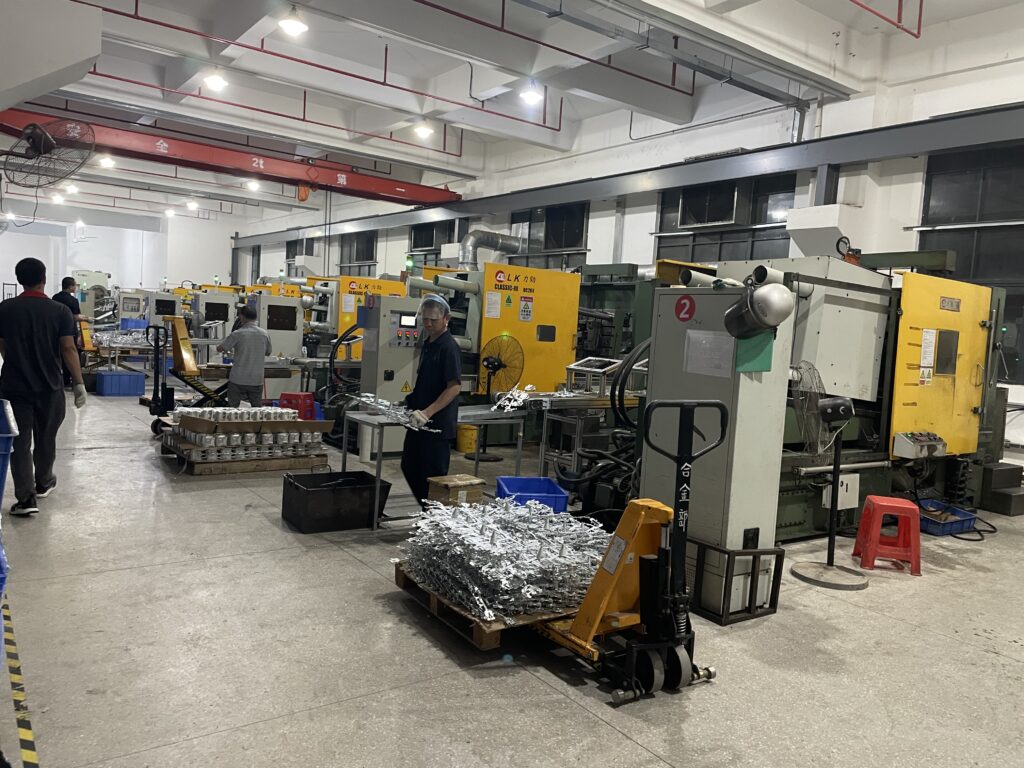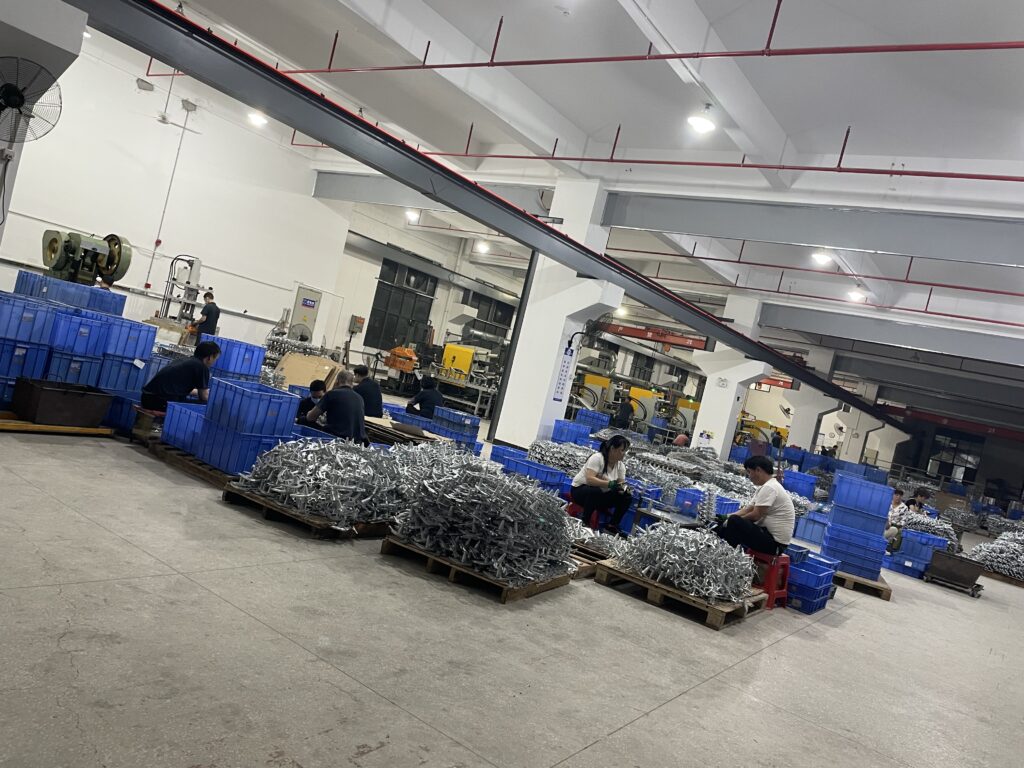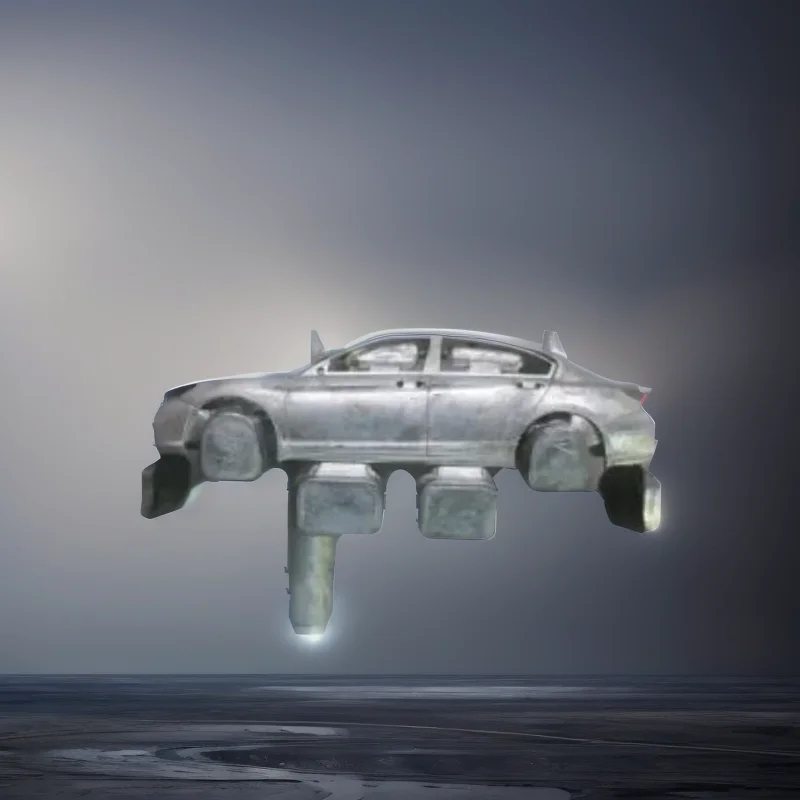Once the sample is approved, the model moves into the third stage: Mass production.
At this stage, all metal components are produced using a precise die-casting process. We use imported zinc alloy as the raw material, which undergoes a process of high-temperature and high-pressure heating at 230°C. This heat causes the material to reach a molten state, allowing it to flow into the cavities of the mold. allowing it to flow into the cavities of the mold.
Once cooled, the molten material solidifies into the exact shape of the part, forming durable and detailed alloy components.
This process ensures that each metal piece is manufactured with high accuracy, capturing intricate design elements while maintaining the strength needed for the final product.
After casting, these metal parts undergo further refinement, such as polishing, finishing, and painting, to meet the exact requirements established for the next stage.




Diecasting
The production of alloy parts involves several key steps to ensure high-quality, durable components.
First, we put the zinc alloy into the furnace. where the temperature is raised at 420c to melt the metals into a liquid state. Once the alloy is melted and homogenized, the liquid state metal flows into molds to shape the parts. Then it cools and solidifies.
Next, the solidified parts go through various machining and finishing processes, such as cutting, grinding, and polishing, to achieve the exact dimensions and surface quality needed. During this stage, parts also undergo heat treatment to enhance strength or durability.
Finally, the alloy parts are inspected for any defects and tested to ensure they meet the required standards before flow into the next stage.




Spruce Gate Cleaning
Burr Treatment
After the alloy parts are produced, there are excess materials from the gates and runners that are no longer needed. We use mechanical processes, such as metal stamping presses and manual die-cutting machines, to remove these unwanted sections.
During the manufacturing process, alloy parts commonly develop surface burrs. To achieve a smooth finish, we typically use manual filing techniques to remove these burrs and ensure the parts meet the required surface quality standards.


Drilliing
Oxide layer polishing
Use the drilling machine to drill holes that meet the assembly dimensions.
The alloy parts are polished to remove the oxide layer, and make it easier to apply paint later on and to improve the smoothness of the surface.
Die casting Department plays a key role in our production process, as it is responsible for manufacturing all alloy components. Equipped with 8 fully automated metal die-casting machines, All the workers in the die casting department with more than 3 years field experience. This setup allows for a daily output of 3,000 units and a monthly production capacity of 72,000 units.


Post treatment process
Fnished alloy parts
Precision Crafted Diecast Models for True Enthusiasts
– Bringing Engineering Excellence to Life in Every Details –
© 2024 All Rights Reserved.

